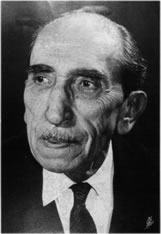 Luis Gianneo is one of the “best kept secrets” of Argentine music. His piano music is original and solid, and the overall quality of his creations is high. He wrote well for the piano – his pieces are comfortable for the most part and fun to play. He published mostly at the defunct Editorial Argentina de Musica. Some of his works have been republished by Peer Music International.
Luis Gianneo is one of the “best kept secrets” of Argentine music. His piano music is original and solid, and the overall quality of his creations is high. He wrote well for the piano – his pieces are comfortable for the most part and fun to play. He published mostly at the defunct Editorial Argentina de Musica. Some of his works have been republished by Peer Music International.
In a previous article in this blog, I focused on Juan José Castro and his 1941 Tangos for piano. Gianneo belonged to the same generation of composers – he was born in 1897 and died the same year as Castro, 1968. Like Castro, Gianneo was also interested in writing nationalistic music using a more modern, dissonant and universal style that avoided the cliches and “postcard” approach of some of the earlier Romantic composers in Latin America. This modern nationalistic movement sprouted throughout Latin America from the late 1920s until the end of the 1940s or mid 1950s. Often, these Latin American composers knew and respected each other’s music. Throughout these years there was some sort of “continental awareness” and synergy that produced, from my point of view, some of the most interesting classical music in the history of Latin America.
Gianneo, like many of his colleagues, was attracted to some of the tenets of neoclacissism: use of a “spikier” tonality with plenty of 4ths and major 7ths, politonality, non-functional harmony, bimodality, 2-voice counterpoint, etc. But at the same time he made use of vital and driving rhythmic energy and ostinatos based on folk dances that remind me of Ginastera, 19 years younger than Gianneo. In fact I truly believe that Ginastera’s exciting and driving style owes a lot to the style developed by Gianneo.
Gianneo’s piano output is pretty large. You can find a catalog at http://ostinato.tripod.com/giaworks.html . My favorite pieces include his “Sonata No. 2,” “Suite,” “Tres Danzas Argentinas” and the children pieces that are the subject of this article. Marco Polo released his complete piano works in 2002, recorded by myself and other Argentine pianists, members of the now extinct Ostinato Foundation. These CDs are available through amazon.com and other vendors.
“Seven Children Pieces” (1946) are at the late elementary difficulty level, and “Music for Children” (1941, with a total of 10 pieces) is at the early and mid intermediate levels. These sets have great pedagogical value, and are, at the same time, very charming and effective. They don’t sound like “teaching pieces”, but are sophisticated little gems.
The “Seven Children Pieces” are written in a very tonal language, with only a few dissonances, so as to make them more accessible to younger ears. Children (or adults!) should be able to play the easier ones during their second or third year of piano studies. Among the pieces is “Tango,” which uses a limited range of notes. It introduces sound pedagogical features such as dotted rhythms and melody in the left hand in the middle section, which allows students to work on balance and projection of both hands. It is evident that Gianneo knew how to compose excellent teaching pieces! You can listen to an excerpt of this Tango here (recording by Dora DeMarinis, from the Marco Polo release).
Tango

Another piece in the “Seven Pieces” set is “Danza Campesina” (“Rustic Dance”). This piece features a hemiola typical of Latin American folk music: the rhythm of the right hand sounds in 6/8, while the left hand sounds in 3/4. Another rhythmic challenge of this piece is the use of syncopation in the right hand in the second system. The piece is great for working on an energetic non-legato articulation produced from the forearm with fingers close to the keys. This articulation, sometimes called “martellato” (“hammered”) is necessary in many other compositions by Gianneo, and also Bartok and Ginastera. You can listen to an excerpt of Danza Campesina here (recording by Dora DeMarinis from the Marco Polo release).
Rustic Dance

The first two pieces in “Music for Children,” Prelude and Fugue, are the most difficult and dissonant of the set. The Prelude is loosely based on the broken chords of Bach’s popular Prelude in C major from the Well-Tempered Clavier book 1, but written “upside-down.” The fugue uses a folk theme. The rest of the set includes easier gems such as “Indian Lullaby,” “The juggler” and “Little Dance Song.”
Indian Lullaby (excerpt from the Marco Polo release, Pervez Mody, piano)
Indian Lullaby

“Seven Pieces for Children” and “Music for Children” are printed by Peer Music International and are available at a discounted price here:

look inside
|
7 Piezas Infantiles
(Easy Piano Solo). By Luis Gianneo (1897-1968). For Piano. Peermusic Classical. Easy. Softcover. 16 pages. Peermusic #61110-501. Published by Peermusic (HL.228109).
|




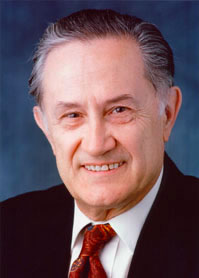 Luis Jorge Gonzalez is a compatriot of mine. He was born in San Juan, Argentina, in 1936. Coincidentally, Luis Jorge studied piano and composition at the same university where I got my first undergraduate degree in piano – the Universidad Nacional de Cuyo, in Mendoza, Argentina. Luis Jorge came to the US in the 1970s to study composition at the Peabody Conservatory. He taught at the University of Colorado at Boulder from the 1980s until 2003, when he retired. You can read about his distinguished career on wikipedia (in Spanish for now):
Luis Jorge Gonzalez is a compatriot of mine. He was born in San Juan, Argentina, in 1936. Coincidentally, Luis Jorge studied piano and composition at the same university where I got my first undergraduate degree in piano – the Universidad Nacional de Cuyo, in Mendoza, Argentina. Luis Jorge came to the US in the 1970s to study composition at the Peabody Conservatory. He taught at the University of Colorado at Boulder from the 1980s until 2003, when he retired. You can read about his distinguished career on wikipedia (in Spanish for now):  Luis Gianneo is one of the “best kept secrets” of Argentine music. His piano music is original and solid, and the overall quality of his creations is high. He wrote well for the piano – his pieces are comfortable for the most part and fun to play. He published mostly at the defunct Editorial Argentina de Musica. Some of his works have been republished by Peer Music International.
Luis Gianneo is one of the “best kept secrets” of Argentine music. His piano music is original and solid, and the overall quality of his creations is high. He wrote well for the piano – his pieces are comfortable for the most part and fun to play. He published mostly at the defunct Editorial Argentina de Musica. Some of his works have been republished by Peer Music International.




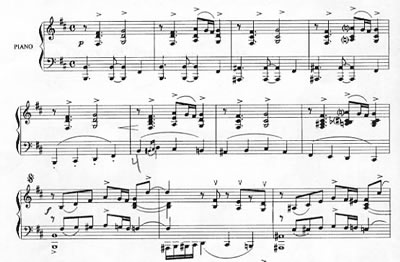


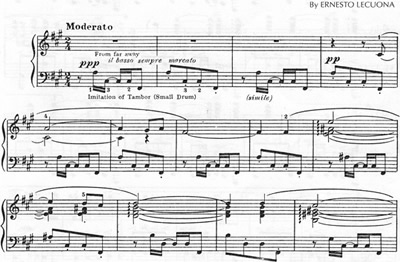
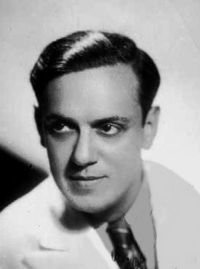

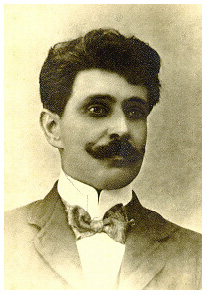 Ernesto Nazareth was a Brazilian pianist and composer born in Rio de Janeiro in 1863. He died in 1934. Described as the “true incarnation of the Brazilian musical soul” by his compatriot Heitor Villa-Lobos, Nazareth composed and published more than 200 short piano compositions with strong popular flavor. Of these, 88 are tangos, many of which are still popular in Brazil and the rest of the world.
Ernesto Nazareth was a Brazilian pianist and composer born in Rio de Janeiro in 1863. He died in 1934. Described as the “true incarnation of the Brazilian musical soul” by his compatriot Heitor Villa-Lobos, Nazareth composed and published more than 200 short piano compositions with strong popular flavor. Of these, 88 are tangos, many of which are still popular in Brazil and the rest of the world. 
